Ever looked at your home after another rough New England winter and thought, I really need siding that can actually handle this weather? You’re not alone. Between freezing winds, heavy snow, and salt air near the coast, finding something that lasts and still looks good isn’t easy. Most homeowners here deal with cracked panels, peeling paint, or fading colors far too soon.
That’s why this guide on the best siding for New England is here to help. We’ll break down which materials stand up best to the region’s unpredictable climate, which ones are worth the money, and how to pick a style that fits your home perfectly. By the end, you’ll know exactly what type of siding keeps your house looking strong, warm, and beautiful all year long.
Vinyl Siding
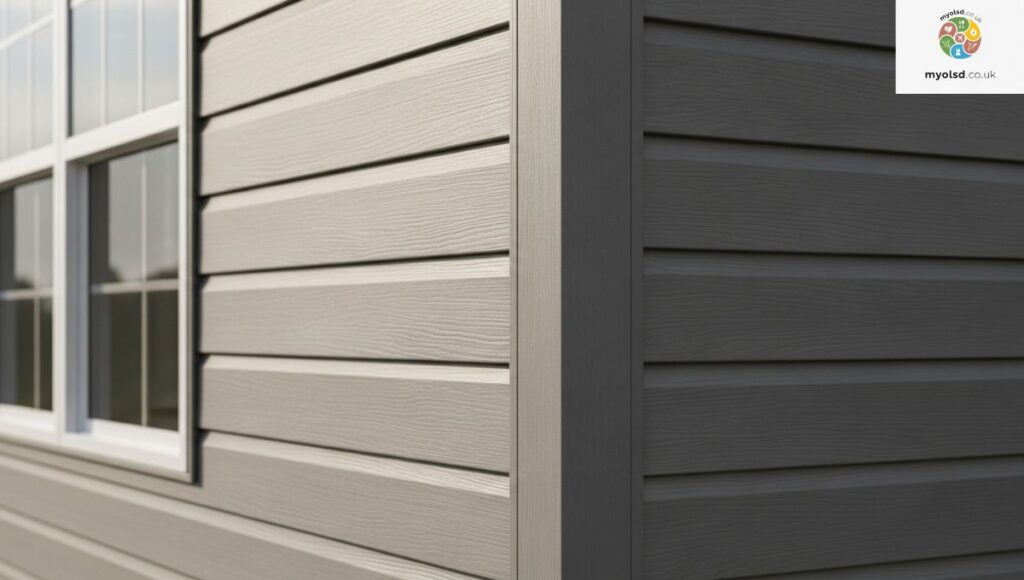
Vinyl siding remains one of the most popular choices among homeowners in New England. It’s affordable, easy to maintain, and available in a huge range of colors and textures. Made from polyvinyl chloride (PVC), this siding type offers excellent weather resistance, keeping your exterior safe from moisture and harsh winds.
Another advantage is its lightweight structure and flexible design, which makes installation faster and less labor-intensive. Vinyl siding can mimic the appearance of natural wood, offering a traditional New England look without constant repainting or sealing.
Benefits of Vinyl Siding
Vinyl siding is known for its low maintenance. You can simply wash it with soap and water to restore its color. Its fade-resistant coating ensures your home maintains curb appeal for years. Plus, it offers great moisture protection, making it ideal for New England’s coastal regions and humid summers.
Another plus is its energy efficiency foam-backed or insulated vinyl increases your wall’s R-value, helping your home stay warmer in the winter and cooler in the summer. This means more comfort and lower energy bills throughout the year.
Disadvantages of Vinyl Siding
Despite its benefits, vinyl siding isn’t perfect. It can become brittle in extremely cold temperatures, which can lead to cracking during New England’s deep freezes. Also, while it resists rot, it’s not as impact-resistant as other materials like fiber cement. A stray baseball or hailstorm could leave dents that are hard to repair.
Additionally, vinyl is not a fire-resistant material. Although most products carry a Class-A fire rating, they can melt or warp when exposed to direct heat or flames.
Read more Article: Best Time of Day for Red Light Therapy
Fiber Cement Siding
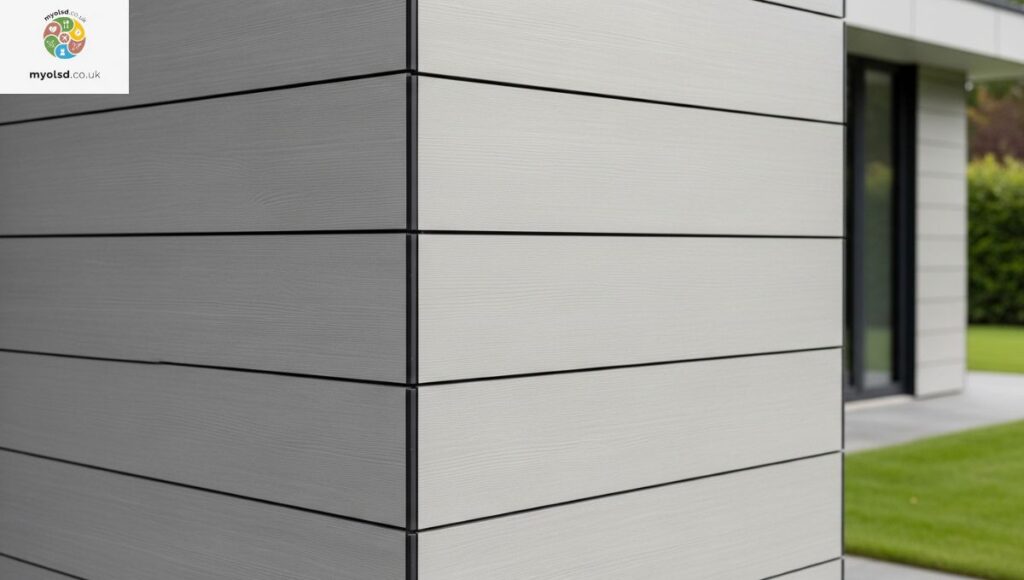
Fiber cement siding has earned a reputation for toughness. Made from Portland cement, sand, and cellulose fibers, this material is built to handle extreme weather, perfect for New England’s mix of freezing winters and humid summers. It doesn’t warp, rot, or attract pests, making it one of the most durable siding materials available today.
Its non-combustible nature also adds a layer of fire safety, while offering a premium, wood-like look without the heavy upkeep. Many New England homeowners choose fiber cement for its balance between beauty and strength.
Benefits of Fiber Cement
Fiber cement siding offers excellent durability and weather resistance. It holds up against heavy snow, hail, and wind better than most alternatives. It’s also resistant to rot, mold, and termites—common threats in damp coastal environments.
Because it’s a non-combustible material, fiber cement helps protect homes in areas prone to wildfires or high heat. It also provides superior insulation, reducing heat transfer and keeping your home comfortable across all seasons. Brands like James Hardie® offer long-lasting color options with ColorPlus® Technology, ensuring fade resistance for years.
Disadvantages of Fiber Cement Siding
The main drawback is cost and installation difficulty. Fiber cement siding is heavier and requires skilled labor, which can raise your installation price. It also needs occasional repainting after several years, though far less frequently than wood.
Still, its long lifespan, often over 50 years, means it’s a smart investment for homeowners who want both style and protection from New England’s unpredictable climate.
Cedar Siding
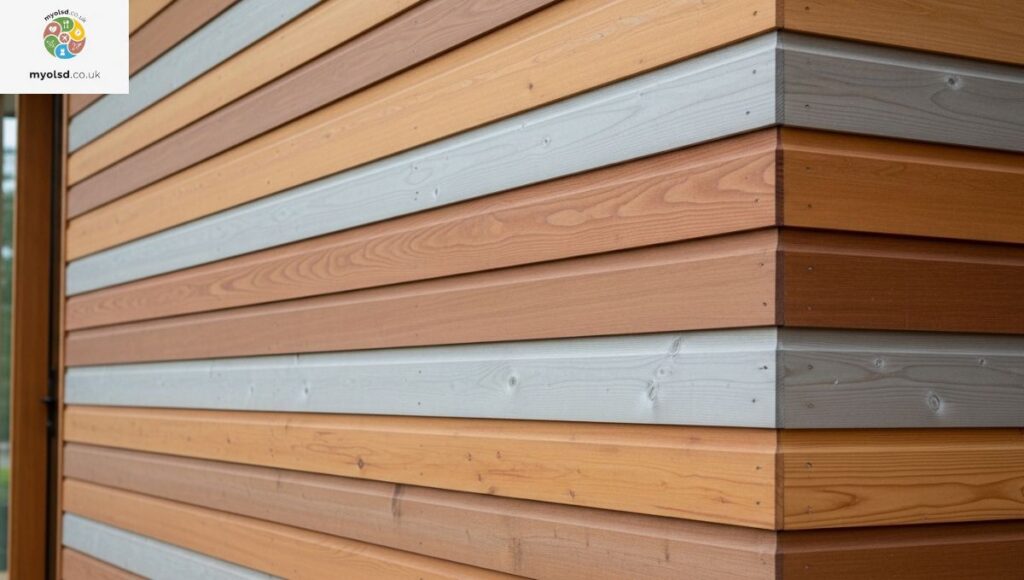
For those who love a traditional, timeless aesthetic, cedar siding delivers unmatched charm. Common in Cape Cod homes and colonial architecture, cedar offers a natural warmth that blends beautifully with New England landscapes. It’s known for its pleasant aroma, natural insulation, and ability to resist moderate moisture.
However, because it’s a natural wood siding, it requires proper sealing and maintenance to prevent issues like rot or insect damage.
Benefits of Cedar Siding
Cedar siding offers superior insulation compared to many man-made materials, keeping interiors warmer during cold New England winters. Its natural oils make it more resistant to moisture and pests, giving it a longer lifespan when properly maintained.
Cedar can also be stained or painted in a wide range of finishes, allowing homeowners to customize their exterior to match personal style or neighborhood architecture. The authentic wood texture enhances your home’s curb appeal instantly.
Disadvantages of Cedar Siding
The main challenge with cedar siding is maintenance. It needs to be cleaned, repainted, or re-stained every few years to prevent fading, cracking, or mold growth. In New England’s wet or coastal regions, moisture can be particularly damaging if upkeep is neglected.
Additionally, cedar is more expensive than vinyl or engineered wood, making it a better choice for homeowners who value aesthetics and tradition over low cost.
Read more Article: Best Time of Day for Red Light Therapy
Engineered Wood Siding
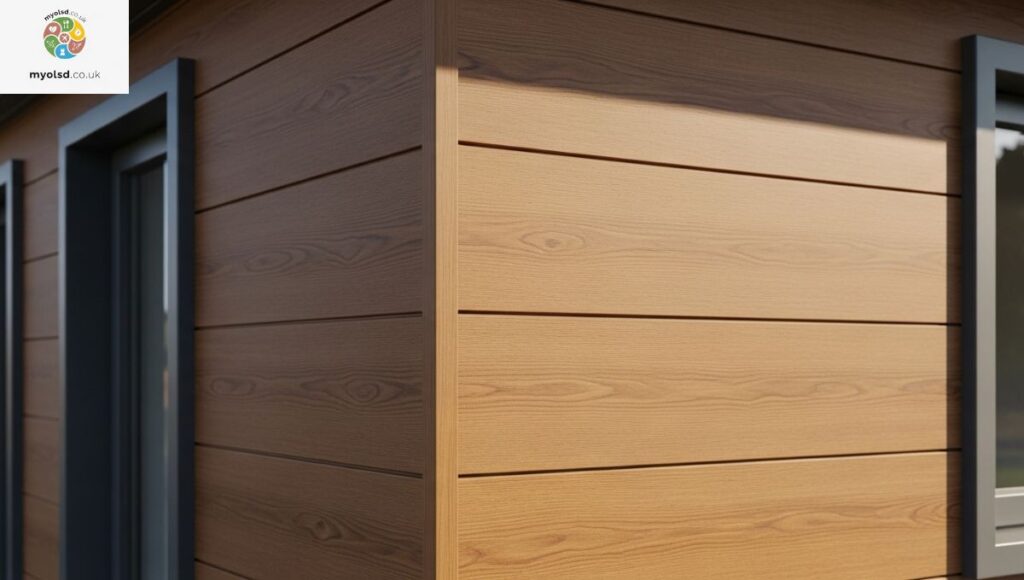
Engineered wood siding is the modern solution for those who want the beauty of real wood without the high maintenance. It’s made from wood fibers, resins, and wax, giving it impressive strength and resistance to weather, rot, and pests.
This type of siding offers excellent impact resistance and works well in both cold and humid climates, ideal for New England homes. It’s lighter than fiber cement but more durable than traditional wood.
Benefits of Engineered Wood Siding
Engineered wood siding is eco-friendly, often made from recycled wood products. It delivers excellent moisture resistance, reducing the risk of warping or rot even in humid New England conditions. The pre-primed or pre-finished surfaces make installation easier and maintenance simpler.
With various siding styles and textures, you can achieve a classic wood look or a sleek modern finish. Plus, brands like LP® SmartSide® offer extensive warranties, some lasting up to 50 years.
Disadvantages of Engineered Wood Siding
While engineered wood resists moisture better than natural wood, it still requires occasional repainting or sealing to keep its protective layer intact. Installation must be precise; if edges aren’t properly sealed, water infiltration can lead to swelling.
It’s generally more expensive than vinyl but cheaper than fiber cement, placing it in the mid-range for siding costs in New England.
How Koopman Lumber Can Help

Choosing the right siding material can be overwhelming, especially when each option has pros and cons. Koopman Lumber specializes in helping New England homeowners compare materials, evaluate local weather factors, and select the best siding for long-term performance.
Their team provides expert guidance, top-tier siding brands, and professional siding installation services, ensuring your home looks great and stays protected for decades.
Conclusion
Finding the best siding for New England comes down to balancing durability, style, and maintenance. With the region’s unpredictable mix of snow, salt air, and humidity, your siding needs to handle every challenge without losing its charm.
Whether you choose fiber cement for its toughness, vinyl for its affordability, or cedar for its timeless beauty, the key is investing in quality materials and professional installation. When done right, the best siding for New England homes doesn’t just protect your house it enhances its value, warmth, and curb appeal for years to come.
FAQs
What is the highest quality siding?
Fiber cement siding is often considered the highest quality due to its durability, fire resistance, and low maintenance needs. It also holds up well against harsh New England weather.
What type of siding is best to survive a hurricane?
Impact-resistant vinyl or fiber cement siding performs best during hurricanes. They resist wind, moisture, and flying debris better than traditional wood siding.
What is the best siding for a house in Vermont?
For Vermont’s cold, snowy climate, fiber cement or insulated vinyl siding is ideal they provide excellent insulation and weather protection.
What is the best siding for upstate NY?
In upstate New York, choose durable, low-maintenance siding like fiber cement or engineered wood. Both withstand freezing temperatures and heavy moisture.
What is the most expensive siding for a house?
Natural stone siding is the most expensive, but it offers unmatched beauty, strength, and longevity compared to other materials.
What are the three types of siding?
The three most common types of siding are vinyl, fiber cement, and wood. Each offers unique benefits in appearance, cost, and maintenance.
What siding is best for cold climates?
Fiber cement and insulated vinyl siding work best in cold climates. They resist cracking, prevent heat loss, and reduce energy bills.
Which siding lasts the longest?
Fiber cement siding lasts the longest, often over 50 years with proper care. Its resistance to moisture, pests, and fire makes it a long-term investment.

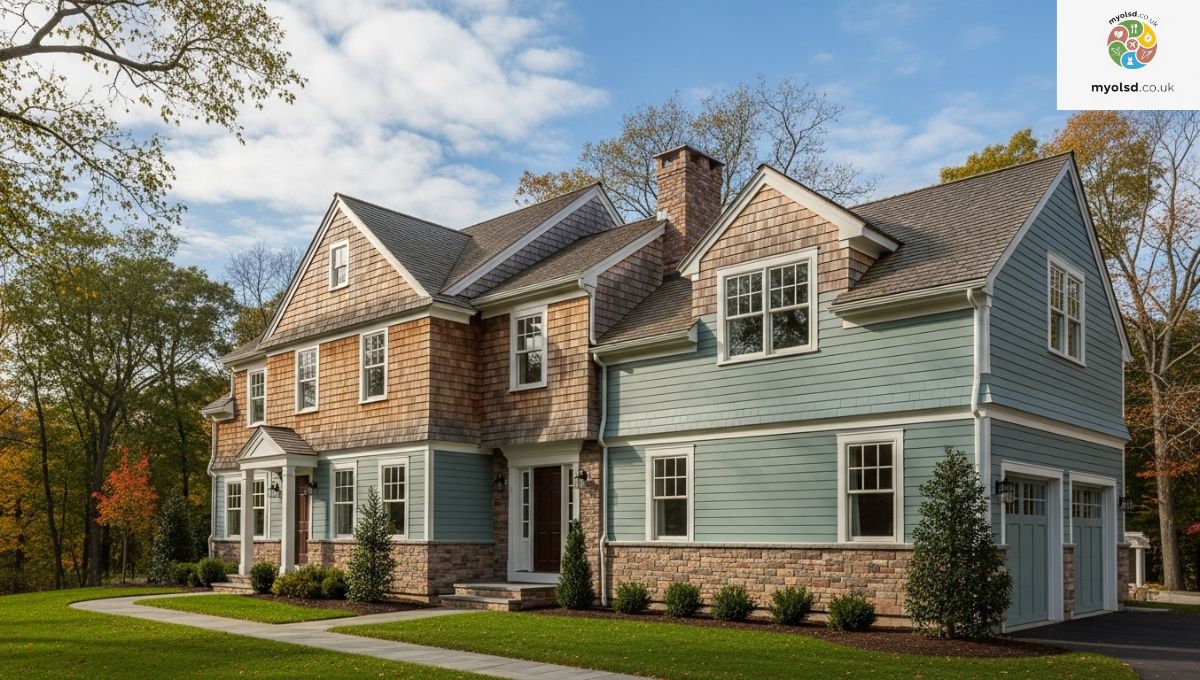
1 thought on “Best Siding for New England Homes: Weather-Proof Options That Last”